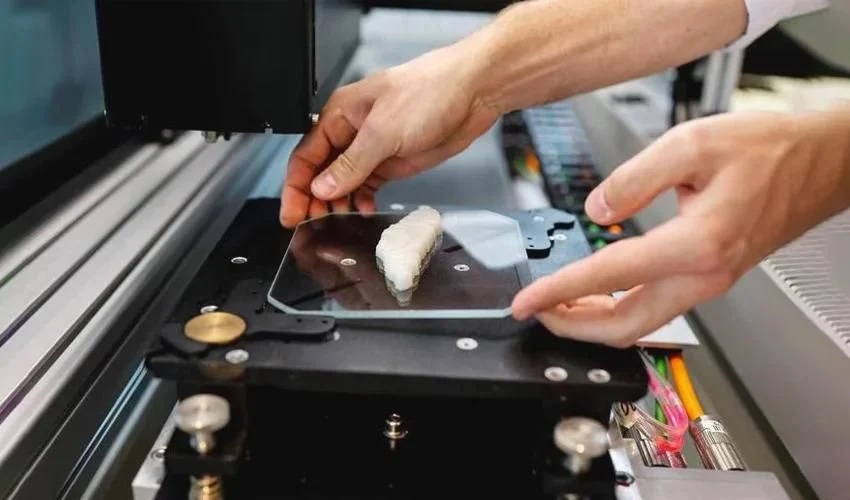The First 3D Printed Fish Filet Could Be Coming to the Dinner Table

Additive manufacturing has become increasing popular in the food sector in recent years. It has completely changed the way food of all kinds is produced and can be customized to meet specific consumer needs. This has now been demonstrated by Israeli food technology company Steakholder Foods, which, in collaboration with Singapore-based fish farming company Umami Meats, has officially produced the first 3D printed fish filet.
As you may know, to create 3D printed meat, cells are grown in the laboratory, taken and converted into muscle and fat. They are then 3D printed using a biological ink. In this case, the result is a fish filet that impressively mimics the characteristics of the real fish, a grouper, chosen as it is considered to be vulnerable and thus facing extinction in the world due to factors like overfishing. Indeed, though bioprinting is still relatively costly, it allows for a more sustainable and ethical production of food without the need to slaughter animals. It also offers a safer and healthier alternative to food, as the ingredients used in the organic coloring process and the production of the final product are strictly controlled.

The fish has already undergone taste testing in Israel (photo credits: Shlomi Arbiv)
The companies are apparently able to create a white filet with a texture, flavor and scales almost identical to a natural fish. Additionally, when it is subsequently fried and seasoned, it can hardly be distinguished, according to those who have already sampled the 3D printed fish filet in Israel. The researchers are currently working on two more filets, which will mimic again grouper as well as eel. They also hope to offer three more endangered fish species in the near future.
Although there is still a lot of research and development work to be done, it seems that the world could be in for a breakthrough in terms of how consumers might eat in the future to solve current problems such as excessive animal farming. If the production processes of 3D-printed products become more and more optimized, the cost of these could decrease and the production and consumption of these products could benefit the broader masses. In the future, this technology could be extended to a wide range of other food products, allowing consumers to enjoy more ethical, sustainable and healthy food in the future.

The final product (photo credits: Steakholder Foods)
Mihir Pershad, CEO of Umami Meats concludes, “We are delighted to have produced the world’s first whole filet cultivated fish in partnership with Steakholder Foods. In this first tasting, we showcased a cultivated product that flakes, tastes, and melts in your mouth exactly like excellent fish should. In the coming months, we intend to announce our plans for bringing this world-class cultivated fish to the market.” You can find out more in the press release HERE.
Would you try the 3D printed fish filet? Let us know in a comment below or on our LinkedIn, Facebook, and Twitter pages! Don’t forget to sign up for our free weekly Newsletter here, the latest 3D printing news straight to your inbox! You can also find all our videos on our YouTube channel.
*Cover Photo Credits: REUTERS






